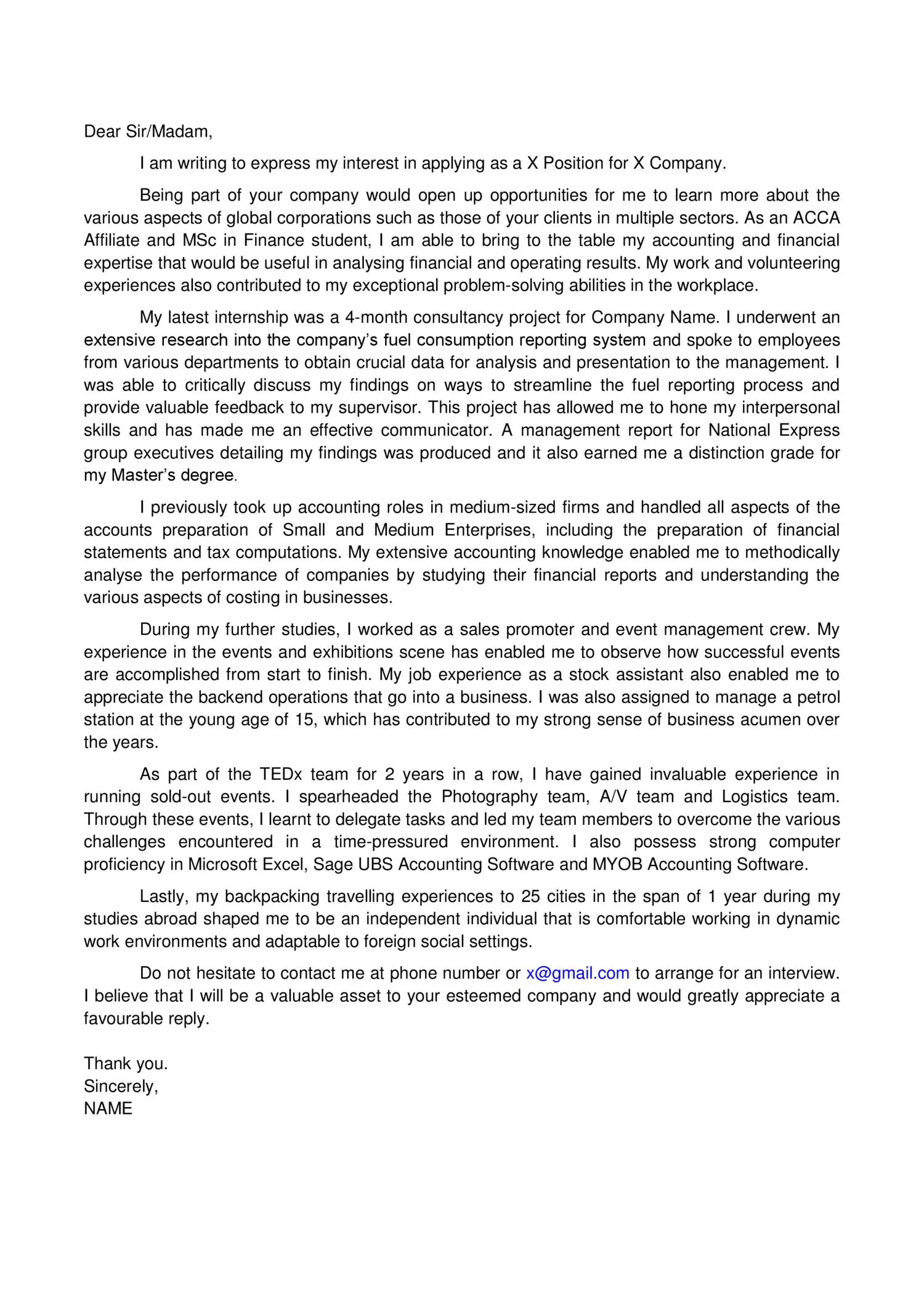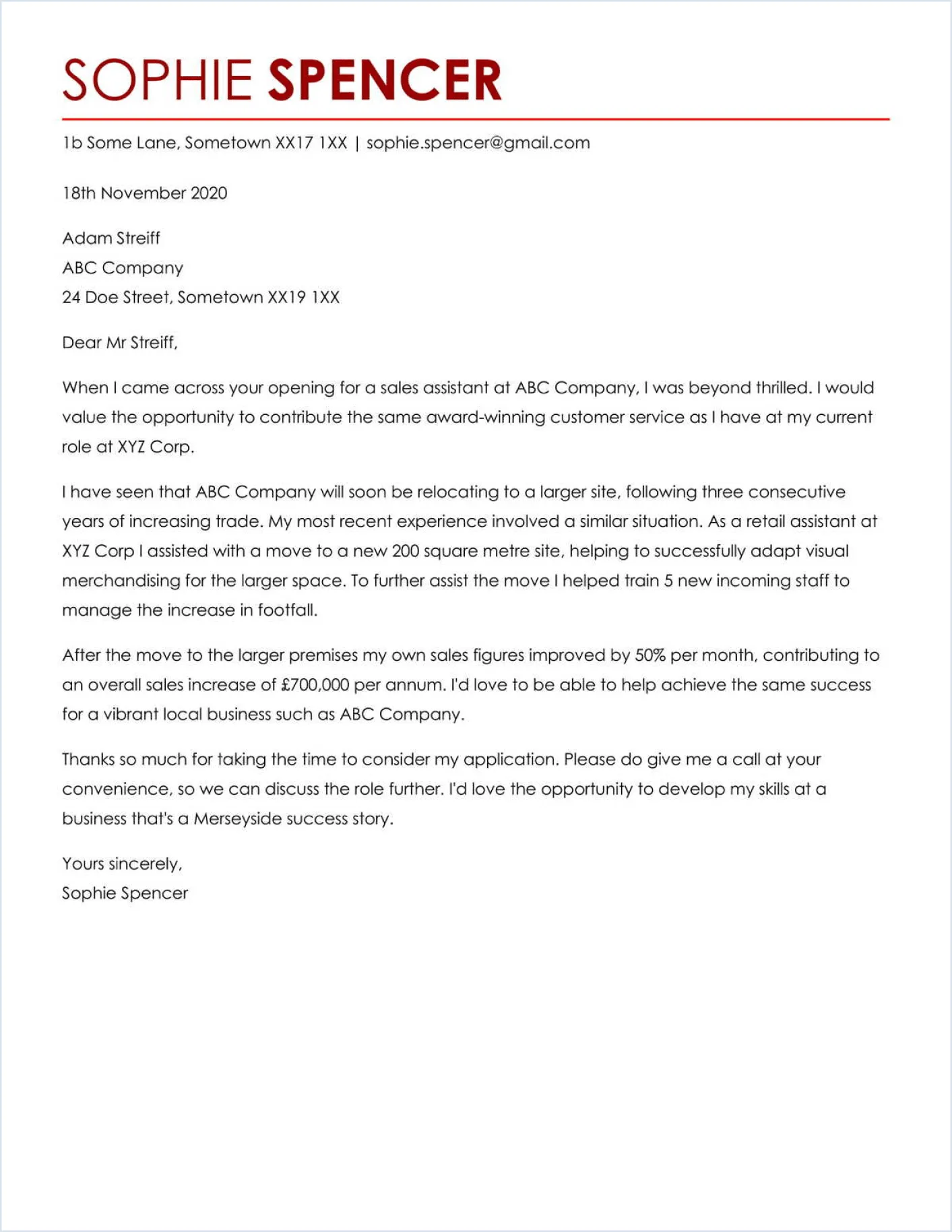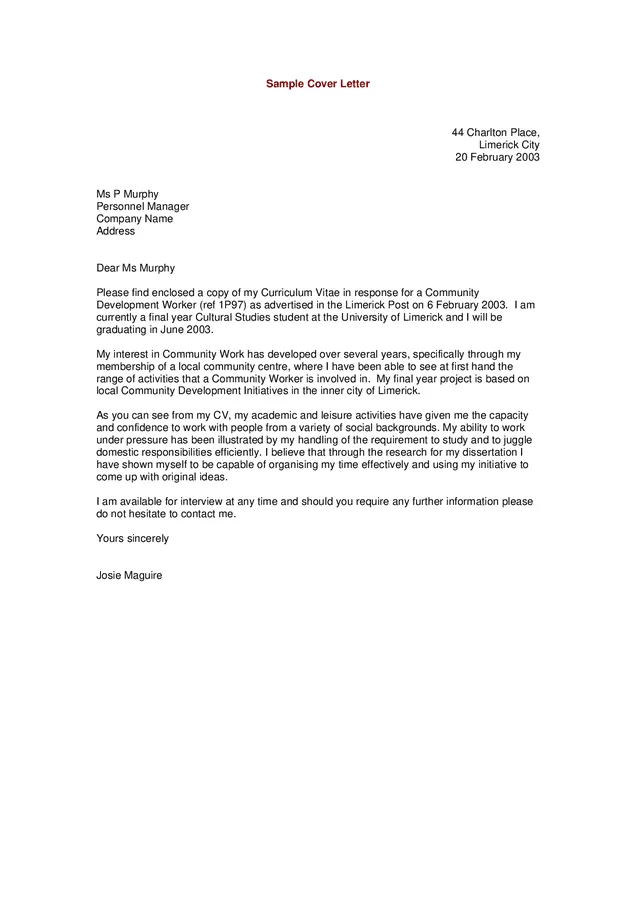What is a Sample Cover Letter?
A sample cover letter is a template or example document that job seekers can use as a guide when crafting their own cover letters. It serves as a starting point, providing a structure and showcasing the essential elements that make a compelling and effective cover letter. Sample cover letters offer insights into the appropriate tone, language, and formatting to help applicants make a strong first impression on potential employers. They can be tailored to specific industries, job roles, or career levels, offering versatile assistance to job seekers across various fields. The goal is to demonstrate how to effectively present your qualifications and express your enthusiasm for a particular opportunity.
The Purpose of a Cover Letter
The primary purpose of a cover letter is to introduce you to a potential employer and provide context for your resume. It’s a chance to go beyond the bullet points of your resume and share your personality, enthusiasm, and specific qualifications for a particular job. A well-written cover letter highlights your key skills, experiences, and accomplishments in a way that is relevant to the job description and the company’s needs. It allows you to explain why you are interested in the position and why you believe you are a good fit for the company’s culture. A cover letter is your opportunity to make a memorable first impression, showcasing your written communication skills and making a case for why you should be invited for an interview.
Key Components of a Sample Cover Letter

A comprehensive sample cover letter typically includes several key components that contribute to its effectiveness. These components work together to present a well-rounded picture of the applicant’s qualifications and suitability for the job. Understanding each element ensures that the cover letter is tailored to the specific job and leaves a positive impression.
Contact Information
At the top of your cover letter, include your contact information, such as your name, phone number, email address, and optionally, your LinkedIn profile URL. This is the most basic information, however, this element is essential for employers to be able to easily reach you. Ensure your contact information is accurate and up-to-date to avoid any miscommunication.
Personalized Greeting
Address your cover letter to a specific person whenever possible. Research the hiring manager’s name or the name of the person who will be reviewing your application. If you cannot find a specific name, use a professional greeting like “Dear Hiring Manager.” Avoid generic greetings like “To Whom It May Concern.” Personalizing the greeting shows that you have taken the time to research the company and the role.
Body Paragraphs

The body paragraphs form the core of your cover letter. These paragraphs should be strategically crafted to highlight your key skills and experiences, explain your enthusiasm for the role, and make a compelling case for your candidacy. The body should demonstrate how your qualifications align with the job requirements and what value you can bring to the company.
Highlighting Your Skills and Experience
In your cover letter, focus on showcasing the skills and experiences that are most relevant to the job description. Use specific examples from your past experiences to demonstrate your abilities and accomplishments. Quantify your achievements whenever possible to provide concrete evidence of your impact. Make sure to align your skills and experiences with the key requirements outlined in the job posting.
Expressing Enthusiasm and Interest
Show genuine enthusiasm for the position and the company. Explain why you are interested in the role and what attracts you to the organization. Demonstrate that you have done your research and understand the company’s mission, values, and recent achievements. Express your excitement about the opportunity to contribute to their success.
Call to Action and Closing

Conclude your cover letter with a clear call to action, such as expressing your interest in an interview. Reiterate your enthusiasm and thank the employer for their time and consideration. Use a professional closing such as “Sincerely” or “Best regards,” followed by your full name.
Formatting Your Sample Cover Letter
Proper formatting is essential for presenting your cover letter in a professional and readable manner. Adhering to formatting guidelines ensures that your letter is easy to scan and makes a positive visual impression. Paying attention to the layout, font, and spacing can significantly enhance the overall effectiveness of your cover letter.
Font and Style Considerations
Choose a professional and easy-to-read font, such as Times New Roman, Arial, or Calibri. Use a font size between 10 and 12 points. Ensure that your font choice is consistent throughout the document. Avoid using overly decorative or unusual fonts that might distract the reader.
Margins and Spacing Guidelines

Set margins to 1 inch on all sides of your cover letter. Use single-spaced lines within paragraphs and double-space between paragraphs. This formatting makes the letter visually appealing and improves readability. Maintain consistent spacing throughout the document for a polished look.
Proofreading and Editing Your Letter
Thoroughly proofread and edit your cover letter before submitting it. Check for any grammatical errors, spelling mistakes, or typos. Ensure that your sentences are clear and concise, and that your writing style is professional. Consider having a friend or family member review your letter to catch any errors you might have missed.
Tips for Success
In addition to the basic components and formatting guidelines, consider incorporating the following tips to make your sample cover letter more compelling. These strategies will help you stand out from other applicants and increase your chances of success.
Tailoring Your Letter

Customize your cover letter for each job application. Avoid using a generic template. Carefully read the job description and highlight the skills and experiences that are most relevant to the specific position. Tailoring your letter shows that you have invested time and effort in the application process.
Using Keywords
Incorporate keywords from the job description into your cover letter. This helps you align your qualifications with the employer’s needs and makes it easier for them to see that you are a good fit. Use keywords naturally and strategically throughout your letter, but avoid keyword stuffing.
Common Mistakes to Avoid
Be aware of common mistakes that can undermine the effectiveness of your cover letter. Avoiding these pitfalls will help you make a more professional and compelling impression on potential employers.
Overly Formal Language

While it’s important to maintain a professional tone, avoid using overly formal or antiquated language. Modern cover letters should be written in a clear, concise, and engaging style. Using overly formal language can make your letter sound stuffy and impersonal.
Generic Content
Avoid using generic content that could apply to any job. Your cover letter should be tailored to the specific position and company. Demonstrate that you have done your research and understand the requirements of the role. Generic content shows a lack of interest and effort.
Grammatical Errors
Always proofread your cover letter carefully for grammatical errors, spelling mistakes, and typos. These errors can damage your credibility and make a negative impression on the employer. Use spell-check, grammar-check, and have someone else review your letter.
Where to Find Sample Cover Letter Templates
Numerous resources are available online where you can find sample cover letter templates. These templates provide a starting point for creating your own cover letter. Remember to customize the templates to fit your personal qualifications and the specific job requirements.
Online Resources
Many websites offer a variety of free and premium cover letter templates. These websites often provide examples for different industries and job roles. They can be a great resource for finding inspiration and guidance. Always tailor any template you use to match your specific needs.
Professional Resume Builders
Some professional resume builders also offer cover letter templates as part of their services. These builders can help you create a polished and professional cover letter in a short amount of time. They guide you through the process and often provide helpful tips and suggestions.
